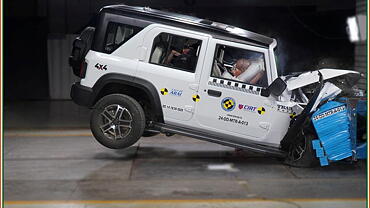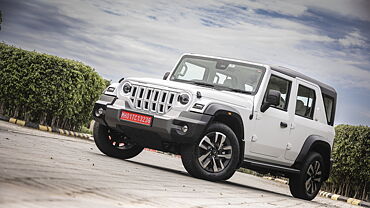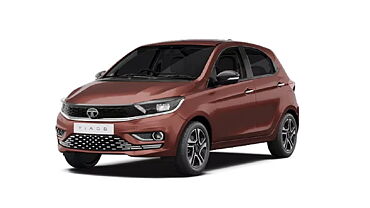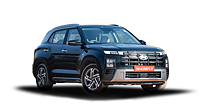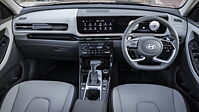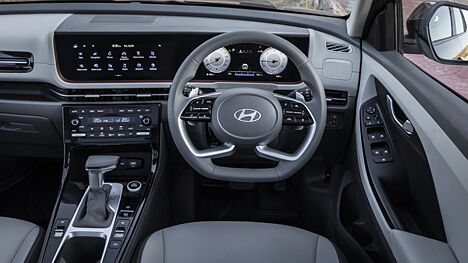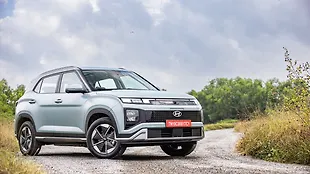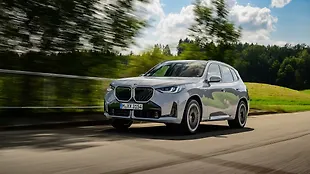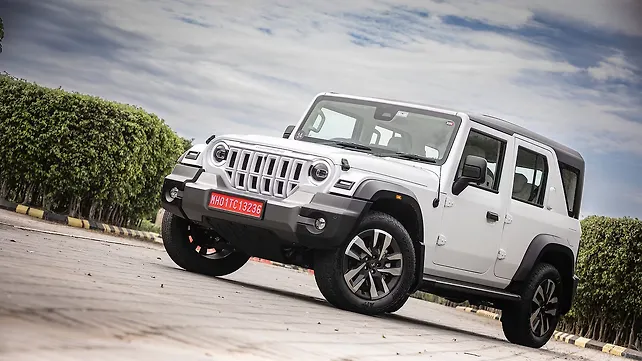
The ‘Thar’ nameplate was always considered an SUV with hardcore off-road DNA, go-anywhere capability, and a rugged lifestyle nature, but it was never associated with being a family SUV. In line with this, the new-gen three-door Thar, which made its debut in 2020, has always been a solid SUV for those who seek adventure and wandering in open spaces across all landscapes. But again, for most consumers, it is not a practical option and has a niche audience.

So, has this perception of the Thar changed with the newly launched five-door Thar Roxx? Well, the new iteration of the Thar is still a very capable SUV with all the characteristics of a top-notch off-roader. However, this time around, the automaker has tried to appeal to a wider audience, be it with its pricing, space management, practicality, or powertrain and drivetrain options. It is a very versatile product but can hit home for buyers of mid-size SUVs like the Hyundai Creta.
Dimensions and body style

The Thar Roxx is a typical body-on-frame SUV with RWD and 4X4 drivetrain options. It is bigger than its three-door sibling and sits well over 4.4 metres in length with a width of over 1.8 metres and a wheelbase of 2.8 metres.
| Dimensions | Mahindra Thar Roxx | Hyundai Creta |
| Length | 4,428mm | 4,330mm |
| Width | 1,870mm | 1,790mm |
| Height | 1,923mm | 1,635mm |
| Wheelbase | 2,850mm | 2,610mm |
| Bootspace | 447 litres | 433 litres |
Now, as visible in the table above, the Thar Roxx is marginally bigger in all dimensions than the very popular Hyundai Creta. Also, the wheelbase further adds to the spaciousness on the inside along with a larger boot capacity compared to the Korean SUV.

Also when it comes to the sheer road presence, the Thar Roxx has a more imposing stance than the Hyundai Creta. And unlike the Creta, which is an FWD car, the Thar Roxx offers RWD and 4WD drivetrain options to just add to the variety in the mid-size SUV market.

Compared to its three-door siblings, the Thar Roxx addresses major issues with practicality, ingress and egress, and overall space for the rear row, even putting many mid-size SUVs to shame when it comes to cabin space and practicality.

Features at par with modern mid-size SUVs
What makes an SUV feature-rich? A large touchscreen infotainment with wireless smartphone connectivity, premium sound system, digital instrument panel, 360-degree camera, ventilated front seats, panoramic sunroof, and ADAS. Now, most of the features mentioned above were given a complete miss with the three-door Thar considering the nature of the SUV.

However, with the Thar Roxx, the brand has bundled these features and more, to cater to the needs of customers who want a feature-packed SUV. That said, the focus shift here is major, as even the upholstery is now of lighter colour with soft-touch materials all over the place, unlike the three-door version, which has a completely black theme.
| Top Features | Mahindra Thar | Mahindra Thar Roxx | Hyundai Creta |
| Touchscreen infotainment | 7-inch | 10.25-inch | 10.25-inch |
| Digital instrument panel | No | Yes | Yes |
| Panoramic sunroof | No | Yes | Yes |
| Ventilated seats | No | Yes | Yes |
| 360-degree surround camera | No | Yes | Yes |
| Level 2 ADAS | No | Yes | Yes |
Powertrain options

Coming to the powertrain and specifications, the Thar Roxx gets two engine options – a 2.0-litre TGDi petrol and a 2.2-litre CRDi diesel engine. Both these engines come mated to a six-speed manual and automatic torque converter unit.
| Configuration | Thar Roxx 2.0-litre TGDi | Thar Roxx 2.2-litre CRDi | ||
| Gearbox | Six-speed manual | Six-speed torque converter | Six-speed manual | Six-speed torque converter |
| Power output | 150bhp and 160bhp/330Nm | 175bhp/380Nm | 150bhp/330Nm | 171bhp/370Nm |
| Drivetrain | RWD | RWD | RWD/4X4 | RWD/4X4 |

Meanwhile, the Creta SUV can be configured in three engine options – a 1.5-litre NA petrol, 1.5-litre turbo-petrol, and a 1.5-litre diesel engine. As for the transmission options, the Korean SUV gets a six-speed manual, six-speed iMT, six-speed automatic, and a seven-speed DCT gearbox.
| Configuration | Creta 1.5-litre NA petrol | Creta 1.5-litre turbo-petrol | Creta 1.5-litre diesel |
| Gearbox | Six-speed manual/iMT | Seven-speed DCT | Six-speed manual/automatic |
| Power output | 113bhp/143.8Nm | 158bhp/253Nm | 113bhp/250Nm |
| Drivetrain | FWD | FWD | FWD |
Now, the Thar Roxx has more powerful engines, be it the petrol or the diesel mill. On the other hand, the Creta offers an NA petrol motor too, along with turbo-petrol and diesel engines. Moreover, the Thar Roxx being heavier and having more powerful engines, we expect the fuel efficiency of the Hyundai Creta to be higher than the former.
So, while the Thar Roxx buyers will never have an issue with the power output, the fuel efficiency will always be a drawback. Meanwhile, the Creta will provide a balance of both, performance and fuel efficiency.
Pricing

The Mahindra Thar Roxx has a starting price of Rs. 12.99 lakh with the base petrol manual variant in RWD guise. On the other hand, the Creta has a starting ex-showroom cost of Rs. 11 lakh for the base-spec NA petrol engine with a manual gearbox.
Now, to keep the comparison as fair as possible, let’s compare the top-spec RWD version of the Thar Roxx with the Creta’s FWD diesel version. While the top-spec Thar Roxx diesel automatic is priced at Rs. 20.49 lakh, the Creta, with its top-spec diesel auto version has an asking price of Rs. 20.15 lakh (all prices, ex-showroom).
For the price range, both models offer top-notch features, including ADAS, 360-degree camera, panoramic sunroof, electronic parking brake, ventilated front seats, and more. However, the Creta might have a slight edge when it comes to overall comfort and a frugal engine. But on the flip side, the Thar Roxx has more powerful engines, better road presence, and off-road prowess.




